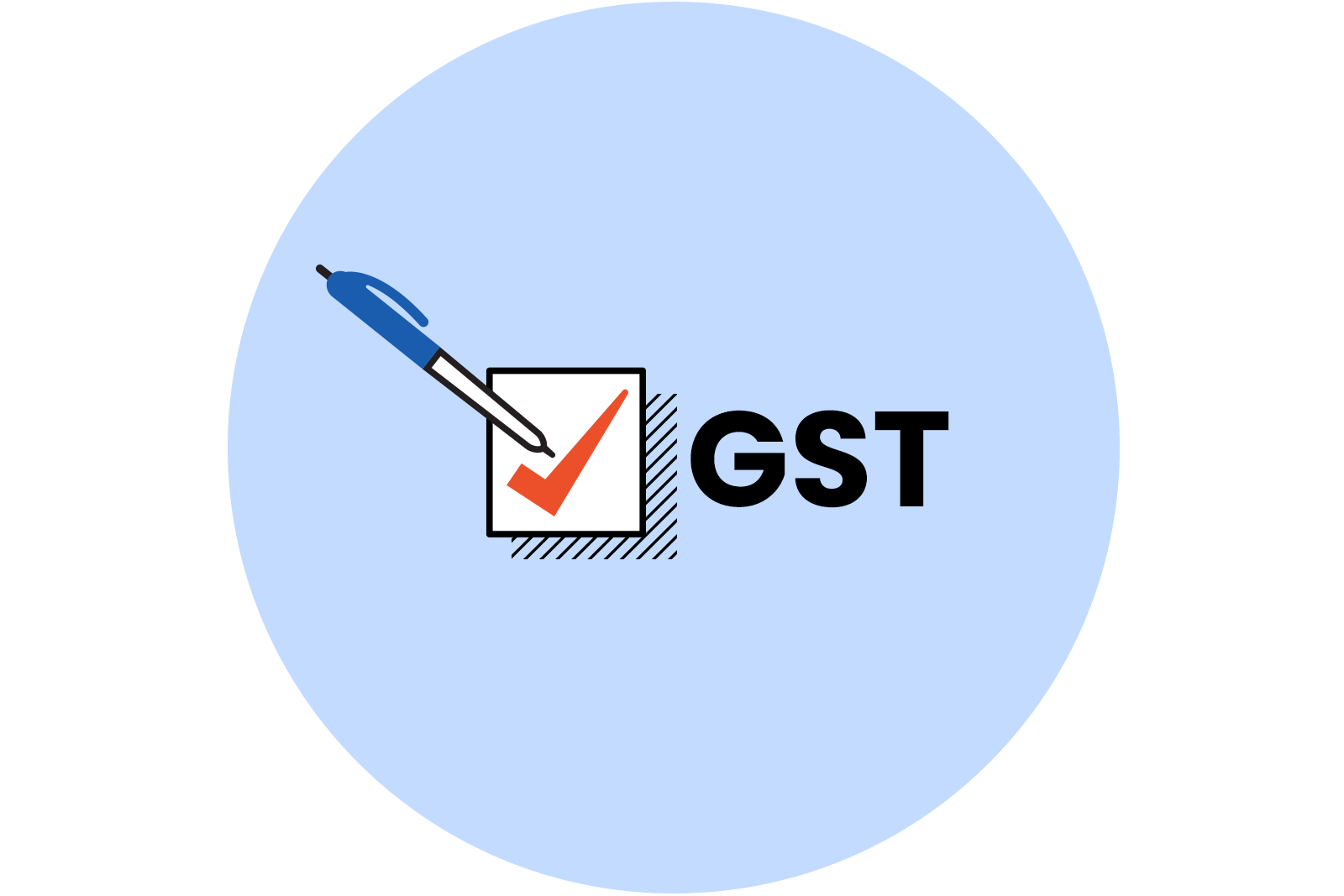When you start working for yourself, your knowledge of goods and services tax (GST) needs to move up a level. As a consumer, you’ll be familiar with GST as ‘that extra bit of tax’ that gets added to almost anything you buy in New Zealand. But as a self-employed person, GST begins to mean a whole lot more.
This article primarily looks at how to register for GST in New Zealand, but before we get into the nuts and bolts of the task, let’s look at who needs to register for GST.
Not all businesses need to be registered for GST. It’s only mandatory if you’re earning above a certain amount. We’ll also run some information past you about two-monthly or six-monthly filing, and the ‘basis’ decision you need to make.
As someone poised on the brink of self-employment, below are the GST-related questions that could be on your mind. These questions are also relevant to someone who’s been self-employed for a while but is only just reaching the income threshold for mandatory GST.
Do I need to register for GST?
You need to register for GST if you have a company with an income of more than $60,000 a year, or if you’re a self-employed individual who earns more than $60,000 a year. The self-employed individual category applies to freelancers, contractors and sole traders.
If your self-employed status applies to a side gig you’re running in addition to a salaried or waged job, it’s important to know that the $60,000 threshold applies only to the money you earn that isn’t liable to PAYE. For example, if you make $20,000 a year building rabbit hutches in your garage, on top of wages that have PAYE deducted from them, you don’t have to register for GST. But it’s an option.
In this instance, registering for GST could be handy because you could claim GST on your rabbit hutch materials. However, you’ll have to add 15% GST to your prices and you need to do your GST returns on time.
How often do I need to file a GST return?
If you’ve jumped the gun and already started the registration process, you’ll quickly realise there’s a decision to be made. How often do you want to file a GST return? The options are every month, every two months or every six months.
The ‘every month’ option only applies to businesses that make more than $24m a year, so that might not apply to you. And if you earn over $500,000 per year, you can’t choose the six-monthly option. Lots of self-employed people choose the two-monthly option, so there’s less drain on cash flow when GST payments come around.
Should I choose payments basis, invoice basis or hybrid basis for GST?
Another decision you need to get your head round is the ‘basis’ of your GST relationship with the IRD. There are three choices:
- Payments basis refers to the date you actually receive GST from doing some work or selling a product. So, if you’re GST registered and you sell a rabbit hutch at the local market on 20 January, the GST you collect from the sale will be part of your GST return at the end of February (if you chose bi-monthly filing). If you’re doing six-monthly filing, it would be part of your GST return on 7 May.
- Invoice basis refers to the date you send an invoice to a customer. For example, if you invoice a customer in January and it’s not due for payment in February, you need to include that invoice in your bi-monthly GST return at the end of February – before you receive the money. If you’re doing six-monthly filing, GST returns will cover all invoices you send for the six-monthly period ending 31 March and the six-monthly period ending 30 September.
- Hybrid basis. This method is a cross between the payments and invoice options. It uses the invoice basis to account for GST on sales and it uses the payments basis to account for your purchases. Choosing the hybrid basis can make life a bit complicated, unless you’re someone who just loves crunching numbers.
Step-by-step guide to registering for GST
GST registration is done online. You just have to follow the steps described below. If you get stuck, you can call the IRD helpline for business – 0800 377 774.
- Go to the IRD’s ‘register for GST’ page. It summarises what you will need:
- An IRD number. This can be your own, if you’re a self-employed individual (freelancer, contractor, sole trader). If you’re starting a limited business, it will need its own IRD number.
- A bank account number, so GST refunds can be paid to you.
- Income figures (turnover for the last 12 months and the next 12 months).
- BIC code – there’s a tool to help you on the page.
- To have made a decision about two-monthly or six-monthly filing.
- To have made a decision about payments basis, invoice basis or hybrid basis.
- Log into myIR. You’ll see the button in the top right corner. It says: myIR login. If you’ve never done this before, you’ll need to click the ‘not yet registered’ prompt and follow the instructions.
- Take a look at the ‘I want to’ menu, which is on the right. Click the More> button to see Register for a new tax account. Click on it.
- Add or select your IRD number. Unless you’re a business, you should be using your personal IRD number. Click ‘Next’ to continue.
- Tick the ‘Goods and services tax (GST)’ box.
- Confirm, edit or provide your contact details, address and bank account.
- Enter your BIC Code. You need to get this right, because it determines your ACC levies. There’s a ‘find my BIC code’ button if you don’t know your industry’s code.
- Check that everything’s correct, then tick the box for ‘I’ve reviewed this information’.
- Read the next page carefully, because it explains the rules for GST registration. If you’re sure you want to register for GST because you are conducting a taxable activity, click the ‘Yes’ button.
- Next you’ll need to answer questions about your current and predicted income. You also have to provide a start date for GST and a registration start date. Then you’ll select filing frequency and accounting basis. We talked about these things further up.
- Then you’ll need to answer some questions about the nature of your work. There are a couple of points to think about: If you are new to self-employment, select the ‘I’m starting a new business’ answer. If you’re already self-employed, but need to register for GST because you’ll soon go over the $60,000 threshold, select the answer that says, ‘My business has or will go over the $60,000 GST threshold’.
- Finally, review all your answers and submit your registration.
And then what happens?
It can take a few days for the IRD to action your registration, so just be patient. Once your registration has been confirmed, you need to start charging GST from the start date you specified. If you provide customers with invoices, check that your invoice form includes your GST number. After you start charging GST, you need to commit to:
- Keeping GST records
- Filing GST returns on time
- Paying any GST you owe IRD on time
The golden rules of GST
Once you’ve registered for GST, this is what happens:
- You collect GST from your customers on the sale of your goods or services.
- You pay GST to your suppliers when you buy goods and services relating to your business.
- When filing your GST return, you work out the difference between the amount of GST you collected and paid.
- If you collected more GST than you paid, you pay the balance to IRD when you file your GST return.
- If you paid more GST than you collected, you can get a GST refund from IRD.




